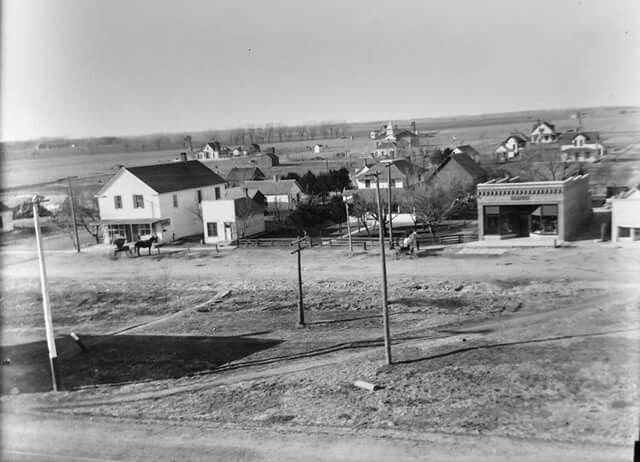
In the years before Nebraska became a state, the wide and fertile Platte River Valley served as one of the principal thoroughfares of westward migration. Thousands of emigrants followed the “Council Bluffs Road” through this valley in the late 1850s, their wagon trains moving steadily along the trail toward Oregon, California, and the mountain territories. The river, broad and shallow, offered both water and a natural guide for travel, and it was along this route that some of the earliest permanent settlers in central Nebraska established their homes.
In 1858, Samuel “Pap” Lamb, one of those early pioneers, established a stage station and post office along the trail, a short distance south of what is now the town of Alda. He named the little stop “Pawnee,” in recognition of the Pawnee people whose hunting grounds encompassed the valley. To the casual eye the land appeared open and unclaimed, yet in truth it remained a place of contest and tradition, frequented both by the Pawnee and their traditional rivals, the Sioux. Stories of conflict between Native peoples and settlers are part of Alda’s earliest heritage, reminders that this region was still very much a frontier.
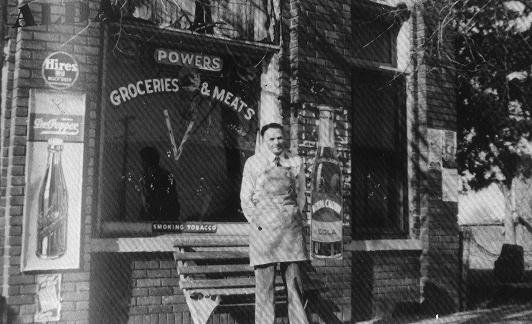
With the coming of the Union Pacific Railroad in 1866 and 1867, change came swiftly to the Platte Valley. The iron rails stretched westward across Nebraska, bringing with them a steady flow of new settlers and the promise of markets for agricultural goods. Trains became a common sight, and the line of travel that had once been ruts of wagon wheels now echoed with the sound of locomotives. Homesteaders, drawn by the offer of government land and railroad tracts for sale, began to fill the valley.
In 1871, the United States Post Office requested that Pap Lamb change the name of his station, as “Pawnee” was causing confusion with Pawnee City to the southeast. He chose instead the name “Alda,” in honor of the first child born at that settlement, giving the young community a name both personal and distinctive.
Only two years later, in 1873, the course of Alda’s development shifted once more. The Union Pacific sought to centralize its network of stations, so that homesteaders hauling grain and produce to market might be better served. Alda, still small, was obliged to relocate some miles to the southwest, approximately eight miles from Grand Island. The railroad constructed storage sheds at the new site, and the Mitchell family, among the first to adapt, moved their general merchandise store to the new location. One by one other settlers followed, moving their businesses and building new homes near the station, forming the nucleus of a permanent town.
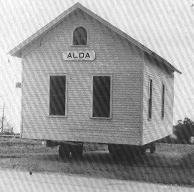
The Platte Valley filled quickly during those years. Homesteads appeared at the rate of four to eight on each section of land, and so many children were present that four schools were required in each township. The sounds of hammering and sawing carried across the prairie as families erected houses, barns, and outbuildings. The prairie sod was turned by plow, fenced for crops and livestock, and within a short span of years churches and community halls arose. Those traveling westward by train remarked in wonder at the rapidity of settlement, noting that what had seemed wilderness only a few seasons before was now patterned with fields and homesteads.
In 1876, John Schaupp added to the prosperity of the area by erecting a grist mill between Alda and Wood River, near the new crossing of the stream. The mill became a vital service for local farmers and a point of gathering, and the little community that grew near it was known informally as Schauppsville. The Schauppsville school soon gained a place in memory as well, hosting not only lessons but also literary societies, Grange meetings, 4-H activities, and Friends’ Sunday school, all of which enriched the social and educational life of the countryside.
The years were not without trial. The nationwide depression of 1893 struck hard at Nebraska’s agricultural economy, yet in 1894 the Quakers of Alda summoned the determination to build a church. One year later the Methodists also erected a house of worship, and in time the congregations united. To this day, Alda has never had a saloon, a fact noted with pride by its citizens.
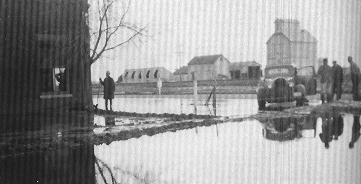
Hall County, of which Alda is a part, became notable in the 1920s for its network of well-maintained roads. With a road laid out on every section line, the county earned state honors in the “Better Roads Contest.” Local farmers debated with vigor the so-called “mud tax,” assessed to fund paving projects, and there was similar discussion regarding the newly instituted gasoline tax. One local farmer, writing on the subject for the Nebraska Farmer, earned ten dollars for his contribution.
Alda’s steady agricultural rhythm continued until the outbreak of the Second World War, when the federal government selected land north of the town for the construction of a munitions plant. Families were forced to vacate some twenty sections of farmland, and a wave of new workers arrived to labor in the plant. The sudden influx of people created a housing shortage so acute that some families resorted to living in converted chicken houses. That same land today serves as a sprawling ag-industrial site.
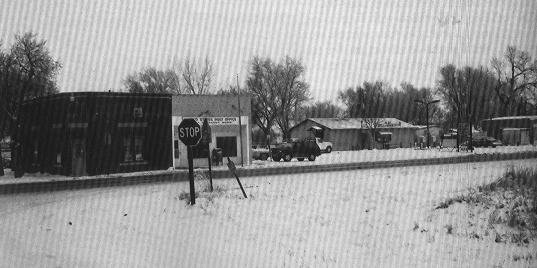
The growth of population necessitated improvements in education. A rural junior-senior high school was located at Wood River, while Alda maintained classes for the younger grades. Rural school districts contributed to the system, providing instruction to the many children of farm families. Cooperative institutions emerged as well; Alda and Wood River organized a joint rural fire department, with equipment housed at Wood River, though each town also maintained its own volunteer department. In later years, the idea of a joint law enforcement body was also raised.
The postwar decades brought irrigation and further agricultural improvement, but Alda’s greatest growth derived from the establishment of industry nearby. Since 1968, eight manufacturing plants have been built in the vicinity, providing employment and attracting residents. By the latter part of the twentieth century, Alda had grown to a population of approximately six hundred, with ten businesses, a post office, and the Methodist Church serving as its principal institutions.
What began in 1858 as a lonely way-station on the Platte Valley trail has become a permanent and respected town in central Nebraska. Its past is colored by stories of frontier days, of Native hunting grounds and pioneer mills, of railroads and homesteads, and of churches that anchored community life. Its present reflects the grit of its people and the opportunities brought by both agriculture and industry. Alda, once merely a resting point for weary travelers, now stands as a community with a deep and interesting history, looking with confidence toward the future.
Source
Partridge, Dennis N., “Nebraska Community Histories: A History of Alda, Hall County, Nebraska.” Nebraska Genealogy. September 27, 2025.
Back to: Nebraska Community Histories
Discover more from Nebraska Genealogy
Subscribe to get the latest posts sent to your email.
